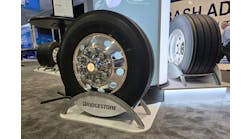How fleet technicians can access dealership-level repair information
Given the increasing complexity of today's commercial vehicles, fleet technicians need access to the same repair information that dealership technicians have access to. In general, they do have the access they need, but it is important they know what steps to take if they ever encounter any roadblocks.
"As detailed in the Right to Repair Law in Massachusetts and the national memorandum of understanding, information such as service bulletins, build sheets, and diagnostics codes available to dealerships are required to be provided by the OEMs," says Holly Wolfe, managing director of the National Automotive Service Task Force (NASTF).
"All too often, vehicle manufacturers are not providing the complete information necessary under the Right to Repair Law," says Sheila Andrews, a heavy duty expert and longtime advocate for the automotive aftermarket industry. "This might include current engine diagnostic information or other up-to-date system information. Furthermore, some manufacturers make it difficult for technicians at fleets and independent shops to locate their service information websites and go through proper channels to obtain subscriptions to repair and diagnostics information."
Fleet technicians sometimes have to get resourceful. That can mean relying on a vendor or other colleague with significant parts expertise, and sometimes that means relying on a local dealer.
"In other instances, technicians can look to scan tool manufacturers that have been able to backward-engineer their devices to help fill in the blanks," Andrews says.
No matter how resourceful a technician might be, information gaps will sometimes persist. To help close those gaps, NASTF has assembled links to the OEMs' available service sites. Additionally, NASTF has created a means by which fleets and technicians can request information:
File a Service Information Request (SIR) through NASTF if a manufacturer hasn't responded to a request. "The more detailed the SIR is, the faster NASTF can use its network of industry professionals to get a response," Wolfe says.
File a complaint with NASTF if there still is no response, which initiates a dispute resolution process. "The manufacturer is brought into a resolution panel with aftermarket and other industry experts to have the information provided to technicians and shops through its service information website," Wolfe explains.
While Right to Repair dictates that OEMs should provide the same information to third parties that they do to their dealerships, it is still important to know the steps to take if the information is not available.



